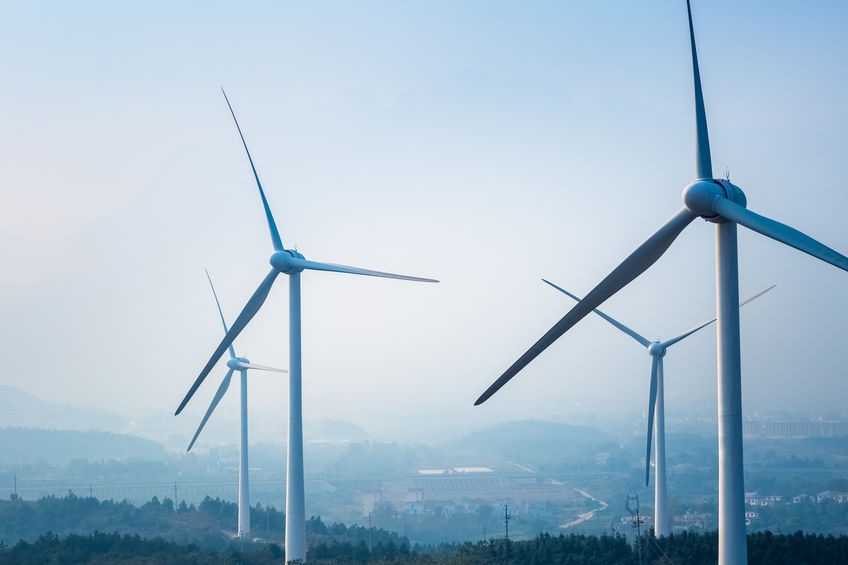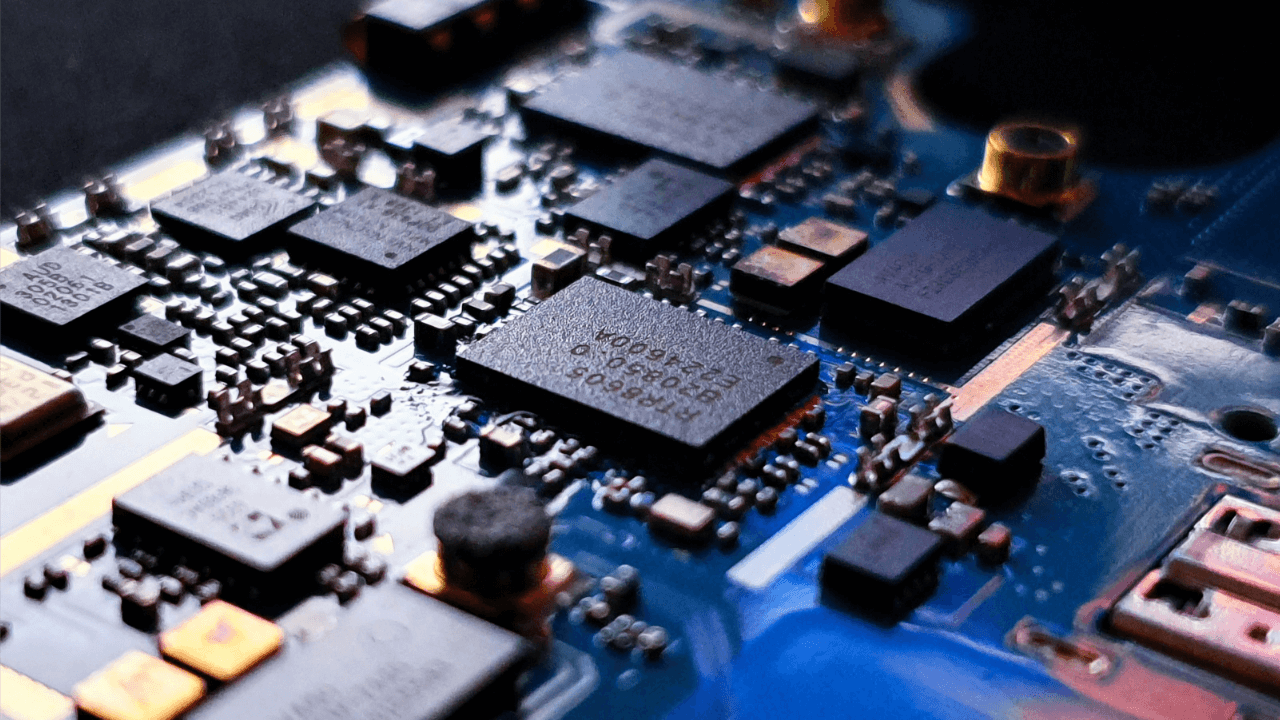
There are currently about half a million wind turbines (WTs) in operation worldwide. Recent years have seen a significant surge, representing a 19 percent increase since 2019. Over the next few years, that number is expected to grow by about 50 percent, and most industry insiders agree that’s a fairly conservative estimate.
The reliability of the technology has increased markedly over time, strengthening the movement to wind power in general. As monitoring technology and component engineering continue to improve, operators reported a 700 percent decrease in gearbox downtime since 2007. This is significant to the viability of wind turbines because the gearbox is still the component most likely to fail. As the most expensive replacement part in the apparatus itself—in the range of $270,000—the more reliable it is, the less it will cost to operate, produce, and deliver clean energy to the people, which, among other positive signals, bodes well for the future of our planet.
Vibration sensors provide data that enables predictive maintenance, allowing operators to manage assets at a distance while optimizing workflows to ensure maximum value.
In the case of the gearbox specifically, there is a significant push towards condition monitoring for components most likely to fail. Shafts, bearings, rotor blades, and the electrical generator tend to have the highest failure rates. By attaching wireless vibration sensors to each individual component, operators suddenly have a dependable method of predicting breakdowns and preventing—or at least mitigating—downtime because of equipment failure.
Today, we’ll discuss topics related to wind turbine components and their likelihood of failure, some common faults attributable to specific features, and what conditions vibration sensors need to operate reliably, such as noise density and bandwidth.
Wind Turbine Components and Sensor Requirements
Wind turbine gearbox components typically monitored with vibration sensors include:
- The gearbox itself
- Rotor blades and the hub they are housed in
- Low-speed and high-speed shafts
- The tower and nacelle, which houses all the generating components
Gearbox
The primary function of the gearbox is to transfer energy from the rotors to the generator. Because of variable wind speeds and frequent braking, the load is never consistent, causing a lot of wear on the moving parts.
The low-speed rotor shaft and bearing runs somewhere between zero and 20 rpm, translating to less than 0.3 Hz. Conversely, the high-speed shafts operate at about 3200 rpm or 53 Hz. To adequately identify vibration increases, sensor performance must be sensitive to 0.1 Hz.
Vibration sensors that perform in the realm of up to 10 kHz and up are generally recommended to monitor both high and low-speed shafts as the resonance of the bearings is typically in multi-kHz, no matter what speed the blades rotate at.
Considering the extreme wear and tear these parts endure, it’s easy to see why bearings are the biggest culprit in gearbox failure. When bearings fail, it usually leads to other components, such as gearwheels, breaking down, causing a domino effect of failure across the entire apparatus.
One of the biggest issues with regard to bearing failure is lubrication starvation. To mitigate bearing failure due to lack of lubrication, special bearing coatings are often applied, which lengthens the time to starvation by more than 600 percent. However, even though this approach lengthens the bearing’s lifespan, it does not eliminate the need for vibration sensors. Sensors can help you stay ahead of lubrication issues by detecting subtle friction changes that would indicate this scenario. As these anomalies are often imperceptible by other methods, the sensor itself must have a fairly low threshold so that detection can happen in the early stages.
In general, a sensor with 100- to 200-mg/√Hz is recommended as it will reliably detect bearing faults at an earlier stage, triggering maintenance and avoiding failure-related downtime. However, since bearing failure harmonics occur at various frequencies, higher bandwidth sensors with a range of up to 10 kHz are preferred for wind turbine applications.
Rotor Blades
Wear and tear on rotor blades come from high winds, lightning, ice, and extreme weather conditions that result in blade imbalance. Over time, these factors lead to cracking and fractures along the edges and pitch system failure.
Because many of these variables are beyond anyone’s control, plus the fact that there isn’t currently a standard in terms of materials used for WT blade construction, it’s nearly impossible to predict a turbine blade’s lifecycle. Access to areas where turbines are situated is not always easy, either, as many large-scale operations are situated in offshore locales.
Wireless vibration sensors make it feasible to remotely monitor such conditions, alerting operators to impending failure and maintenance needs without physically accessing the site. Sensors that operate on LoRaWAN® lend additional convenience due to their long-range (tens of miles in open-air applications) and years of battery life.
Broadly, industrial wind turbines 40 m or more in diameter operate in a frequency range between 0.5 to 15 Hz. The sensors used for rotor blade vibration monitoring should be capable of measuring from 0.1 Hz to about 10 kHz, with one placed in the rotor axis and an additional one in a crosswise direction. Amplitude measurements should be in the same general range as those for gearbox bearings.
Wind Turbine Towers
The WT tower itself supports the rotor assembly and nacelle housing. Miscellaneous variables, like impact or sustained structural damage, might cause the tower to tilt off its axis, resulting in less-than-optimal blade angles and eventually leading to premature failure.
Measuring tilt and tower sway, therefore, is essential. A vibration sensor with a minimum range of between 0.1 to 100-Hz is recommended to achieve reliable readings. The vibrational response helps identify the condition and state of stress that the tower is under, collecting vibrational data from the bottom, middle, and top of the turbine.
How Many Vibration Sensors Are Recommended for The WT Gearbox?
You would require a minimum of one single-axis sensor for the main bearing, but two sensors allow you to measure from both an axial and radial direction. This is critical because axial cracking typically shortens the lifespan of the bearing to about two years.
All in all, accurate condition monitoring suggests that a minimum of six vibration sensors should be installed. All gear movement and rotational frequencies should be measured to ensure adequate coverage. So, at minimum, we suggest one sensor for the gearbox low-speed stage, one for the intermediate and high-speed stages, and one sensor each at the middle shaft, high-speed shaft, and sun gear points.
A more comprehensive sensor strategy for monitoring wind turbine conditions would include a total of 12 sensors:
- Rotor Blade: two single-axis sensors measuring axial and transversal directions
- Main Bearing: two single-axis sensors measuring radial and axial directions
- Gearbox Low-Speed: one single axis sensor measuring radial direction
- Gearbox Mid-to-High-Speed: three single-axis sensors measuring radial and axial directions
- Generator Bearing: two single-axis sensors measuring radial direction
- Tower and Nacelle: two single-axis sensors measuring axial and transversal directions
Best Vibration Sensors for Wind Turbine Condition Monitoring
It is critical to choose vibration sensors that are sensitive enough to capture vibrations of low-speed components, like rotor blades.
Radio Bridge, a MultiTech brand, sensors help you monitor vibration and various other conditions that lead to failure, such as lubrication problems, bearing faults, gear mesh defects, imbalances, and misalignment.
Continuous 24/7 monitoring and analysis through the Radio Bridge Console enables predictive maintenance and provides you with actionable data to help you determine asset lifecycle, reducing costs, preventing downtime, and helping you avoid catastrophic failure.
Paired with LoRaWAN wireless technology, further efficiencies are possible. With years of battery life, LoRaWAN sensors are more reliable. They also offer the ability to monitor conditions from a remote location, which is ideal for offshore or hard-to-access equipment locations. Service calls are reduced to all but the most pressing needs. Further, more reliable predictive maintenance mitigates the costs of broken or damaged equipment, a benefit that will ultimately reduce the cost of service delivery, and consequentially, the cost to the end-user.
Rapid deployment is another key feature of Radio Bridge vibration sensors. Sensors are installed with stud-mounting on existing equipment and immediately connect to the Radio Bridge Console, where you can monitor readings in real-time. Sensors are configured over-the-air, so time spent in the field is limited to the sensor installation itself. You configure threshold alerts according to your specific level of tolerance and receive immediate notifications when parameters fall outside the acceptable range.
In conclusion, the deployment of Radio Bridge wireless vibration sensors paired with our vibration analysis system is the best way to improve and streamline operations in large equipment scenarios, such as industrial wind turbines. Because they are rated for industrial and outdoor applications, our wireless sensors provide you with a reliable way to monitor your systems from any location. The cloud-based system is accessible anywhere, anytime, giving key stakeholders the flexibility and visibility they need to get the job done.
If you would like to learn more about Radio Bridge wireless vibration sensors and how they can improve your operations, reach out today to schedule a call. We’d love to show you how we can help.





